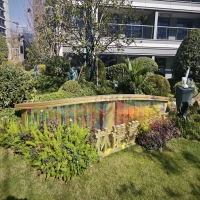Welcome to the website for landscape facilities products and knowledge.
How does the trash can’s design accommodate the use of internal channels for liquid drainage?
Modern trash can designs have evolved to address the common issue of liquid waste accumulation, which can lead to unpleasant odors and unsanitary conditions. A key innovation in this regard is the integration of internal channels specifically engineered for liquid drainage.
These channels are typically built into the bottom or sides of the bin, often featuring a slight incline that guides liquids toward a designated drainage point. High-quality models incorporate food-grade materials that resist corrosion while maintaining structural integrity. Some premium designs even include removable collection trays beneath the drainage channels for easy cleaning.
The engineering considerations behind these drainage systems involve:
1. Gradient design ensuring complete liquid runoff
2. Antimicrobial materials to prevent bacterial growth
3. Sealed joints between compartments
4. User-friendly access points for maintenance
Commercial-grade bins often take this further with advanced features like:
• Automatic channel cleaning mechanisms
• Multi-stage filtration systems
• Smart sensors detecting liquid levels
This thoughtful integration of drainage channels represents a significant advancement in waste containment technology, particularly benefiting kitchen environments where liquid waste is prevalent. Proper implementation of these systems can extend product lifespan while significantly improving hygiene standards in both residential and commercial settings.
The next generation of trash cans continues to refine these concepts, with some prototypes exploring self-cleaning nano-coatings and integrated evaporation systems, pointing toward an increasingly sophisticated approach to liquid waste management.
Related search:

Recommendation
Metal and acrylic color-changing combined curtain wall for large-scale public landscape facilities